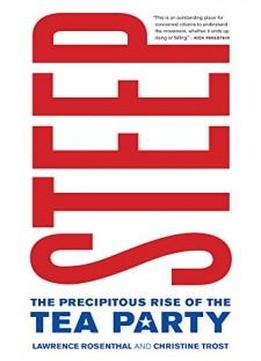
Steep: The Precipitous Rise Of The Tea Party
by Lawrence Rosenthal /
2012 / English / PDF
3.4 MB Download
In the Spring of 2009, the Tea Party emerged onto the American
political scene. In the wake of Obama’s election, as commentators
proclaimed the “death of conservatism,” Tax Day rallies and Tea
Party showdowns at congressional town hall meetings marked a new
and unexpected chapter in American conservatism. Accessible to
students and general readers,
In the Spring of 2009, the Tea Party emerged onto the American
political scene. In the wake of Obama’s election, as commentators
proclaimed the “death of conservatism,” Tax Day rallies and Tea
Party showdowns at congressional town hall meetings marked a new
and unexpected chapter in American conservatism. Accessible to
students and general readers,Steep: The Precipitous Rise of
the Tea Party
Steep: The Precipitous Rise of
the Tea Party brings together leading scholars and experts on
the American Right to examine a political movement that
electrified American society. Topics addressed by the volume’s
contributors include the Tea Party’s roots in earlier mass
movements of the Right and in distinctive forms of American
populism and conservatism, the significance of class, race and
gender to the rise and successes of the Tea Party, the effect of
the Tea Party on the Republican Party, the relationship between
the Tea Party and the Religious Right, and the contradiction
between the grass-roots nature of the Tea Party and the
established political financing behind it. Throughout the volume,
authors provide detailed and often surprising accounts of the
movement’s development at local and national levels. In an
Epilogue, the Editors address the relationship between the Tea
Party and the Occupy Wall Street movement.
brings together leading scholars and experts on
the American Right to examine a political movement that
electrified American society. Topics addressed by the volume’s
contributors include the Tea Party’s roots in earlier mass
movements of the Right and in distinctive forms of American
populism and conservatism, the significance of class, race and
gender to the rise and successes of the Tea Party, the effect of
the Tea Party on the Republican Party, the relationship between
the Tea Party and the Religious Right, and the contradiction
between the grass-roots nature of the Tea Party and the
established political financing behind it. Throughout the volume,
authors provide detailed and often surprising accounts of the
movement’s development at local and national levels. In an
Epilogue, the Editors address the relationship between the Tea
Party and the Occupy Wall Street movement.











